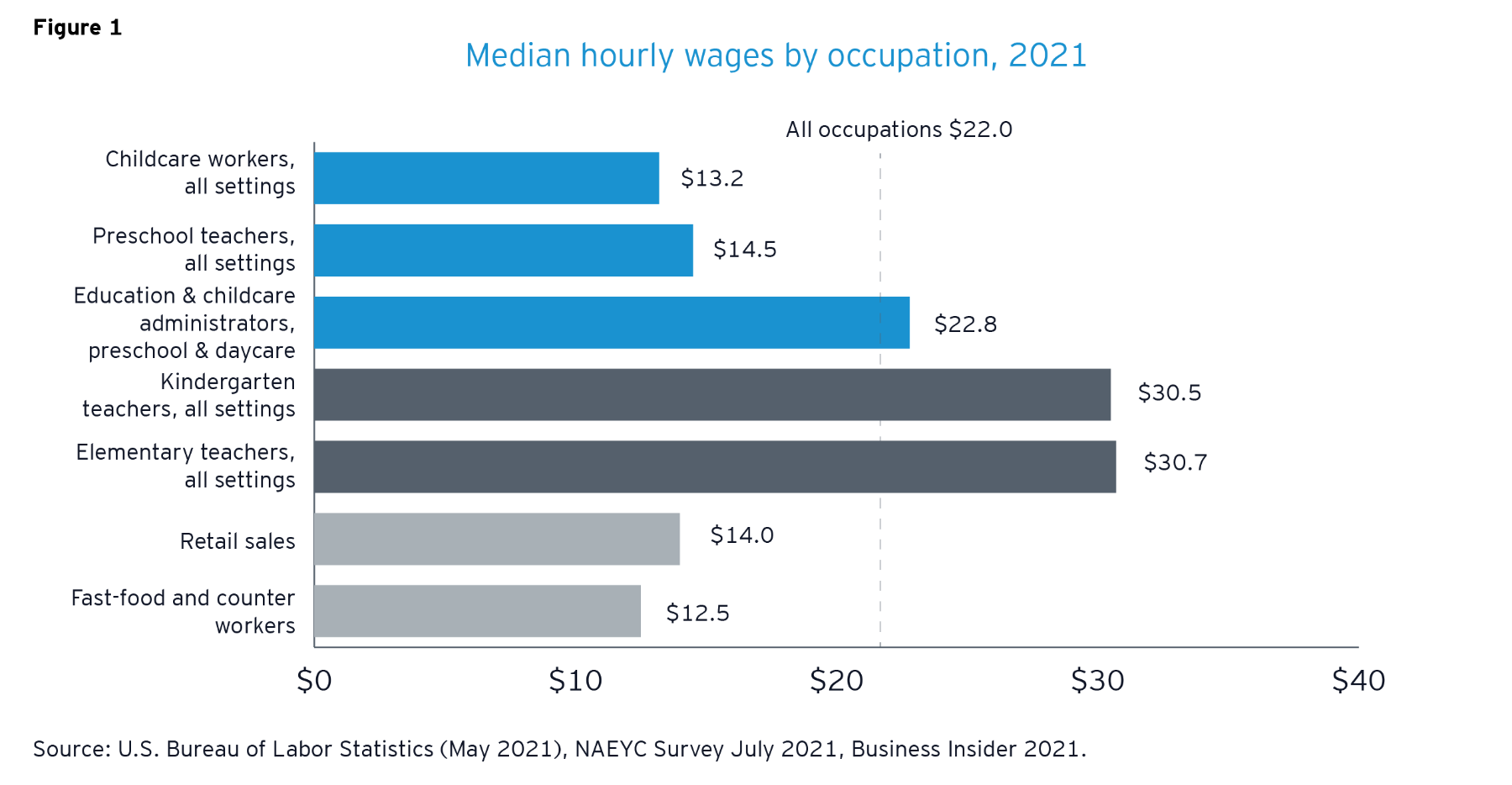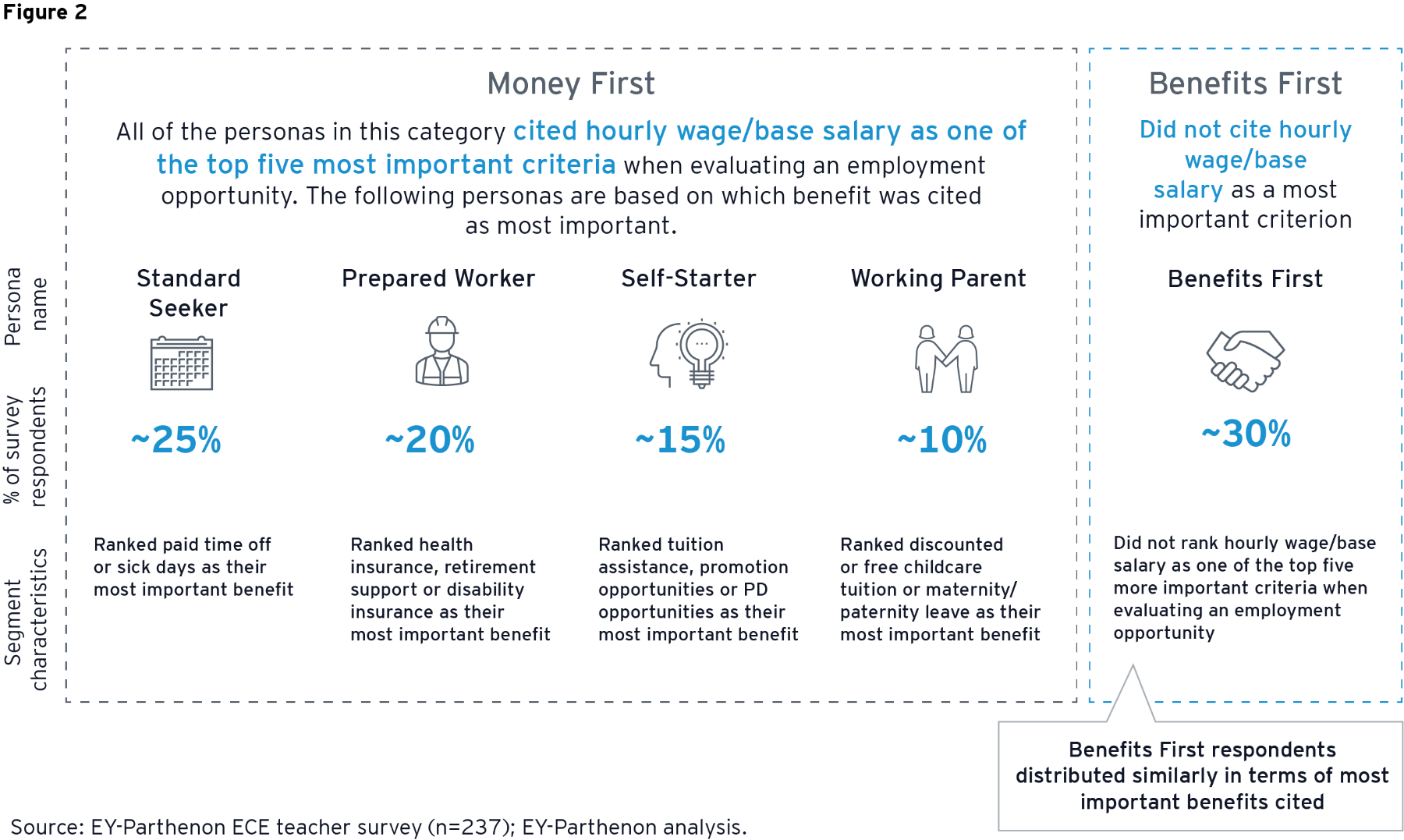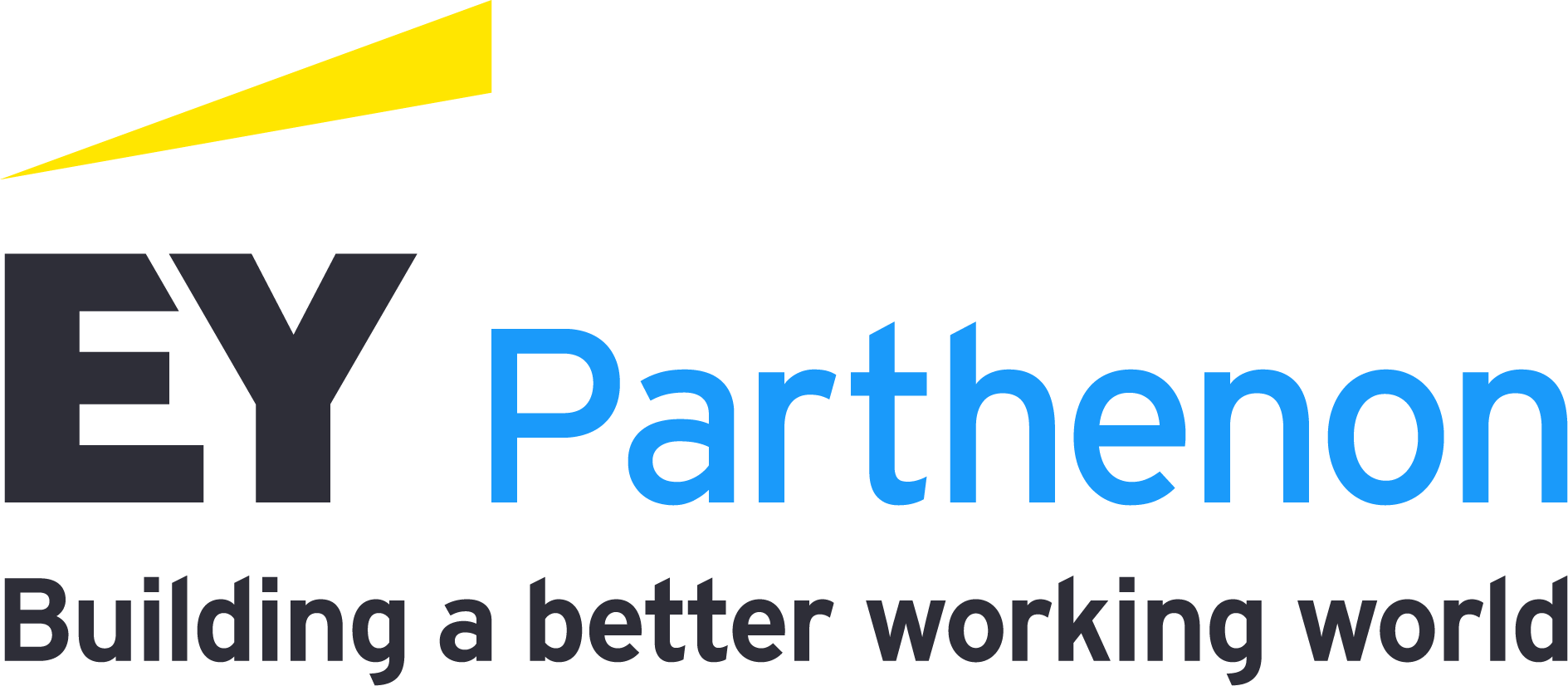Standard Seekers
“Standard Seekers” rank paid time off or sick days as their most important benefit. This persona is deemed “standard” because paid time off and sick days are the most consistently desired benefits within the Money First population overall: approximately 85% cite paid time off as a top five most important benefit, and approximately 65% cite sick days as the same.
Prepared Workers
“Prepared Workers” prioritize health insurance, retirement support or disability insurance as their most important benefit. A greater proportion of Prepared Workers are 25 to 34 vs. the general population at approximately 45% vs. 38%, respectively.
Self-Starters
“Self-Starters” rank tuition assistance, promotion opportunities or professional development opportunities as their most important benefit. This segment has the lowest educational attainment of the personas (approximately 32% with a bachelor’s degree or above), underscoring these priorities.
Working Parents
“Working Parents” cite discounted childcare or parental leave as their most important benefit. More than 80% of educators in this persona have children, while less than half of educators overall cite having children.
Rethinking total reward strategies can support improved staffing outcomes
Taken together, our findings related to compensation and benefits preferences among early childcare educators suggest three key recommendations for centers seeking to improve staffing outcomes while remaining within budget:
1. Prioritize increases to base pay
Especially relative to alternative and lower-skilled employment opportunities, base pay is the primary lever through which early childcare centers can better attract and retain workers. Upward base pay adjustments should be the priority for compensation-related investments. As centers look to recalibrate base pay, they may need to consider the specific competitive dynamics in their geographies, local minimum wage trends and expectations of their unique workforces.
2. Offer benefits aligned to life stages, but tailor the menu
Early childcare centers can offer a menu of benefits from which employees can select, based on personal goals and circumstances, to improve attraction and retention. Offering a curated set of benefits strategically aligned to life stages embodied by the personas is the most cost-effective strategy, versus offering a broad catchall array of benefits. With the former approach, employers respond to and appreciate a spectrum of needs, which evolve over educators’ lives, while leaving room to invest more meaningfully in base pay. Critically, the distribution of preferences and needs varies across workforces based on geographic and demographic factors, so centers may need to closely assess their specific employee populations to tailor investments and create effective benefits packages.
3. Strive for quality in provided benefits
It is important for centers to confirm that there is depth in the benefits selected for their packages, not just breadth, to have the greatest impact on hiring, retention and employee satisfaction. Across benefits received today, only 50% to 75% of surveyed educators cite being satisfied with quality, depending on the offering. This provides more reason to “go deep” on a set of benefits tailored to specific workforces rather than try to manage a broad portfolio of lower-quality offerings.
Early childcare centers are playing catch-up when it comes to compensation realignment and will have to act fast to remain contenders in the labor market. Many major retail and fast-food employers, which are increasingly in the consideration set for early childcare workers, re-evaluated compensation during the pandemic in an effort to combat labor shortages and are investing in perks that are relevant to their specific employee populations². Redefining compensation is the primary avenue through which early childcare employers can improve their odds of retaining staff and attracting new talent, and while there is no one-size-fits-all approach, the urgency to develop new strategies is nationally shared.
Thank you to Julia Curley, Sam Wolfson, and Liz Webber for contributing to this article.








